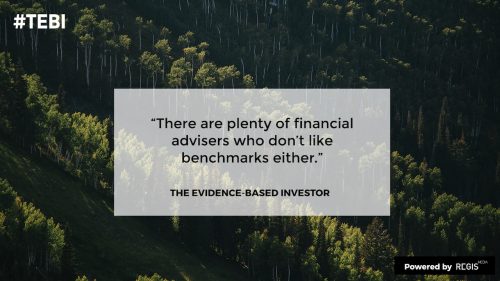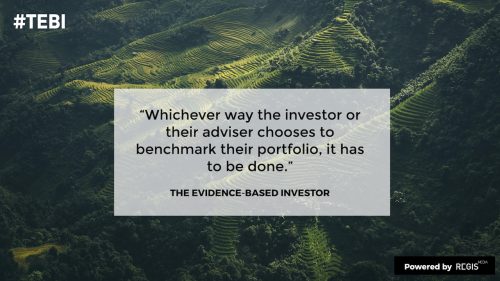I don’t know if you’ve noticed, but the active fund industry seems to have bit of a downer on benchmarks lately. “We’re not tied to a particular benchmark,” we increasingly hear managers say. “We want the freedom to invest in anything we want to. You can’t do that with passive funds!”
So, do benchmarks matter? Of course they do. And what should we make of active managers who appear to have dispensed with them? Be very wary indeed.
Every profession and every industry I can think of uses benchmarks. There are league tables to show us which schools have the best and worst exam results, which hospitals the highest mortality rates, which police forces the lowest crime detection rates. Cars are rated for safety, emissions and fuel efficiency, restaurants for food hygiene, and owners of rental property all want to avoid below-average rating on TripAdvisor. Why should asset managers who, let’s face it, we entrust with our life savings, be spared this kind of scrutiny?
Benchmarks are the standard against which we can measure the performance of investment professionals. They show you the market return, and there are benchmarks not just for broad stock and bond markets, but also for market segments, such as US growth stocks, European small-caps or emerging market bonds.
Of course, stock indexes are not themselves investable. You can’t, for instance, invest directly in the FTSE AllShare Index. But you can buy an index fund which tracks each and every index out there. Yes, there may be a small tracking error and, invariably, there are modest charges to pay, but by investing in an index fund you are guaranteed, near-enough, the market return.
The only possible justification for using an actively managed fund is that you expect it to beat the index after fees and charges. But the evidence clearly shows that, after costs, only around 1% of funds beat their benchmark over the very long term, and that those very few winners are almost impossible to identify in advance.
The plain and simple reason why active managers don’t like their performance being compared to the benchmark is that, over any meaningful period of time, all but a tiny fraction of them fail to beat it.
There are plenty of financial advisers who don’t like benchmarks either. The important thing, they often say, is not how the client compares to other investors but that he or she remains on track to achieve their investment goals. Those advisers are right and wrong at the same time.
Yes, it’s true: financial advice is all about the client’s goals — establishing what they are, devising a strategy to achieve them and helping them to stick to their strategy through thick and thin. But it’s also about achieving a healthy return for the client for the level of risk they are willing to take.
We don’t know what future market returns will be, but every investor is entitled to their fair share. So if, for example, your portfolio returns 5% and the market returns 10%, you might still be on track to achieve your goals, but you have every right to demand an explanation from your adviser!
One of the reasons why active management remains so popular, despite all the academic evidence stacked against it, is that market returns for the last 40 or 50 years or so have generally been very positive. As long as the value of their portfolios was going up, clients didn’t ask too many searching questions. But if investors knew how much larger their pension pot would have been if they’d simply captured market returns at the lowest possible cost, most of them would be horrified.
My experience is that most investors, and indeed many advisers, don’t actually know what their net returns have been and how those returns compare to the market return. They remember the winners but conveniently forget the losers, not to mention all the transaction costs they’ve incurred along the way.
Benchmarking your portfolio is not straightforward. No one, for example, just invests in the S&P 500; typically investors are exposed to a number of different markets. But by comparing each part of the portfolio with the nearest appropriate benchmark, it is possible to see, fairly accurately, how an actively managed portfolio is faring compared to a passive strategy.
An alternative is to use GMAP, the invested Global Multi-Asset Market Portfolio, which is effectively the aggregate portfolio of all investors. The concept has been covered extensively in academic research, notably in a paper by Ronald Doewwijk et al in the Financial Analysts Journal.
ButBenchmarks aren’t a fashion accessory, to be tossed aside when it suits the industry to flog the next big thing. If you aren’t indexing, the chances are you’ve been trailing the market by quite some margin.
I recently commented on this issue for a piece for New Model Adviser:









